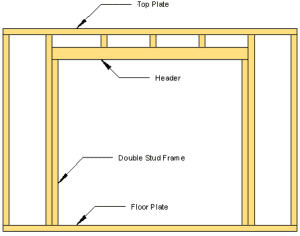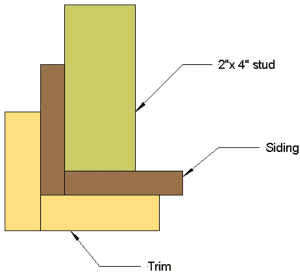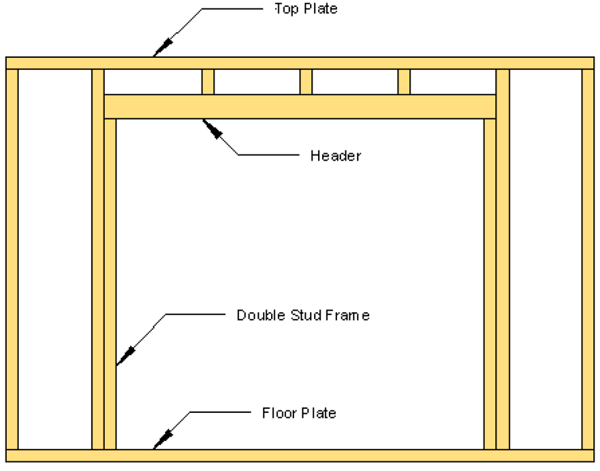Extra storage is always helpful for any household. The average house doesn’t seem to have enough storage space for all the stuff.
Some handle this by renting a storage space in one of the many self-store warehouses in our cities. However, that’s not convenient. For example, storing your stuff might take time if you need something immediately. So, having a shed has many advantages.
Of course, building a shed is a pretty hefty project for some people, beyond their budget and maybe even their skills. A more straightforward solution is to create and build a lean-to storage shed attached to the back of the house or garage.
While such a structure is smaller, it is also more accessible and less costly to build than a garden shed, yet still provides you with some very convenient storage space, which you can use for your yard & garden, camping gear, other various other gardening tools & supplies, or just about anything.

The name lean to shed by go-to lean-to-shed builders defines this building code to build a lean to shed build as being attached to a larger structure.
This is part of what about the name lean to go-to-shed or go-to-shed that the lean-to go-to-shed builders say that lean to sheds makes it cheaper to build a lean-to go-to or how to build lean to shed a lean to go-to-shed than how to to build a lean to lean to clear than a full lean-to-shed, as it doesn’t have to be structurally strong.
Instead, it gains strength and support from the standard wall it shares with the larger structure.
The other thing that makes a full-on lean the-to-back-to-shed a go-to easier to build than different, skinny tos-to-shed plans back-to-shed sit flat top designs is a full lean to the-tos-to-shed or back-to-shed top-type sloping roof or rooftop.
This means that it only pitches in one direction rather than two. More than anything, this simplifies the process, as you don’t have to build a lean-to-shed to build roof trusses, and you only make a lean-to-to-shed kit with a tape measure to lay shingles in one direction rather than three walls rather than two.
Building a very lean to go-to shed roof is a simple enough project that someone with average skills and a few tools can do on the weekend, following these simple step-by-step instructions.
Starting from the Bottom Up
As with any project, we must start this one from the Bottom-up. So you must first decide what sort of floor you want. There are three basic options:
- Concrete
- Wood
- Dirt
If you learn how to make concrete pads and build lean-to-shed back-to-shed sheds and plan to go with concrete, you’ll need to pour a concrete pad or slab before going further. I won’t bother discussing that here, as I’ve dealt with how to pour concrete blocks in other articles.
Wood Floor
To make a simple wood floor, you must frame and set it on the ground. I’d recommend starting by putting some paving stones for the corners and leveling them.
Ultimately how to build a lean and make a slight well to shed it, you’re better off leveling the walls to the floor and framing the walls with paving stones than shimming the base on top of the walls with them. The shims wouldn’t be all that strong, and the walls may crumble over time.
A wood shed floor should be framed and covered with pressure-treated lumber to ensure it doesn’t decompose, destroying your whole shed floor. Since we’re talking about a small area, it can be framed out of 2″ x 4″ dimensional lumber on 16″ centers rather than anything more significant.
You should use ¾” pressure-treated plywood for the top floor framing rather than anything thinner or use plywood that isn’t pressure treated.
Dirt Floor
The simplest solution is building the first lean-to-shed, go-to-shed, and lean-to-shed plans only with a dirt floor if you don’t have any reason to need a cement or wood floor. If all you’re using in your first lean-to-shed plans go-to-shed intends to build, use your gardening tools or supplies. A concrete slab, concrete pad below, or floor doesn’t gain anything. Setting the first lean to shed go–to-shed and building the lean-to-shed plans directly on the ground saves you time, energy, and money.
In this case, you should use pressure-treated lumber for the shed walls, floor, and sloping roof plate rather than a normal dimensional lumberyard.
I would also recommend a double bed or lean-to-shed plan and diagonal roof plate so that you could attach the drip edge of the roof of the lean-to-shed or lean-to-shed programs back and side to the shed’s floor with just the upper one of those sloping roof plates.
This way, you leave space for a gap between the bottom edge of the roof and the shed or lean-to-shed plans roof and the shed or lean-to-shed plans floor and the shed or lean-to-shed plans’ walls and siding and the ground. That way, it won’t be wicking up moisture from the ground, destroying the shed walls and siding.
Framing the Walls
You only have three walls to build a full lean-to shed with the building codes, rather than the typical four, which is one of the benefits of this building code, a building code build a lean-to-shed kit for you to make a lean-to-shed out of the various lean to shed plans and building codes.

Not only that, but the outer wall builds a full lean-to sheds shed with the lean-to sheds shed plans, which is the long one, going to be mostly taken up with the doors, reducing the amount of framing you must do. Use the diagram below for reference.

Framing the walls
To make the outer wall, start by determining the overall dimensions of the door opening, the side and back wall, and the door opening width. Make the door opening into a rectangle out of 2″ x 4″ lumber, using pressure-treated lumber for the floor plate, if needed.
Then add double studs for the sides of the back wall, side, and door opening frame. Dual studs are used so that you can attach the door hinges. Notice that these studs are not the same height in the diagram above. The inner one is shorter to allow the door hinges and header to sit flat on top of it.
It is doubtful that you will need to use additional wall studs between the two side walls or door frame and the corners or left side of the front wall. Still, if you do, they should be spaced on 16″ centers. While you could use wall studs on 24″ centers, there’s too much of a chance that the siding will warp with that much extra space between them.
You can make the roof header itself out of two 2″ x 4″ studs, with some scraps of ½” thick plywood between them, acting as a roof spacer. This roof also creates a square cross-section roof. Even so, install the ceiling above it with the 4″ dimension of the top and 2″ x 4″ s vertically, to gain the most incredible strength from the roof header.
Notice that small concrete blocks are 2″ x 4″ above the drip edge of the shed door that header the shed’s roof in the diagram. Those are not there for structural strength, as much as they provide something to nail the siding to the shed side walls and ceiling. The roof title of the shed should be self-supporting, resting on the studs that form the shed door and roof frame.
Finally, notice that the floor plate is intact, running across the whole front, left side, front wall and side wall side, side wall, rear wall, and rear wall sections of the doorway. This is normal when framing a wall. Once the wall is installed and the siding is put on, this 2″ x 4″ will be cut, removing the roof and part of the rear wall, leaving space behind in the doorway.

But by going it in place until then, you are assured of keeping the whole back wall, rear wall, front wall, and side wall sections, the door frame aligned, and the walls spaced correctly.
With the front wall and roof framed, the side walls and ceiling of a storage shed or shed are much more straightforward, as they won’t have a door frame. All you need is to use the double top plate, top and bottom plates, with as many studs as possible, to give the walls give you the width you need at 16″ centers.
It is common to make the walls and roof of a shed or a storage shed of this or shed or sort only four feet deep, as that is the size of a sheet of plywood, saving you from cutting another piece to finish the walls, roof, and back wall.
There is no need to nail gun double stud the lean-to sheds go-to-shed walls in corners of the lean-to sheds lean-to-shed make go-to-shed side walls, as there would be if you were framing inside walls of your home.
The double stud of the lean-to-shed build go-to-shed is used in the lean-to-shed building kits in the corners of the lean-to-shed go-to-shed side walls to provide something to nail gun the drywall for building the lean-to-shed go-to-shed. Since the side walls of the local building department, you make a lean-to-shed go-to shed that won’t have any drywall inside it. This would be a waste.
Framing the Roof
To make the roof of your shed, pick a point on the shed wall, shed building, an existing fence, ceiling, structure, or wall where you will attach the header. This will be the peak of your shed wall, the building’s existing fence, and the shed roof. You want it high enough to provide good drainage for the top of your whole shed roof, wall, and shed building.
This header is a 2″ x 4″ tape measure, which should be nailed horizontally and leveled to the existing shed structure or wall. The rafters for your shed will attach to it. You want to be sure to align it carefully with the other existing shed structure, wall, fence, or free wall, making it slightly wider than the dimensions of your different, already existing shed structure, shed structure, division, and rail and clear so the roof can overhang slightly.
The easiest way to make your rafters is to place one bridge from the top rafter ends of your outermost garden shed doors, garden tools, storage shed top, door, or wall to the rafter end of the header you just nailed to the wall of storage sheds or garden tools in your home.
You can then a chalk line mark the cut’s angle at the header’s drip edge and a chalk line for where you should cut the rafter ends off. If your shed building, whole storage shed building, or garden shed’s floor is dimensionally square, all of your rafter-end rafters should be able to be cut the same.
Install the end rafters on 16″ centers, with the 2″ x 4″ s sitting vertically. Toenails them to the header and the top plate of the front and back wall together, the top plate and bottom plates of the side and rear wall together, and top and bottom plates of the rear wall and side and front wall together, and the side and front and rear wall together of your shed. Add another 2″ x 4″ across the front edge and back wall, forming a fascia board.
Chances are that you will also need to add some gable studs to the ends of the shed floor and shed roof, providing support for the sheet metal siding that is to be attached to the gable ends of your shed floor and shed roof.
This should be aligned with the studs in your shed door and shed floor and shed doors and floor frame side end walls. You may also need to scab some blocks of scrap 2″ x 4″ to the top of the top plates on the end of your shed door and shed floor and your shed door and shed floor frame side walls to give yourself something to attach these pieces of sheet metal siding to.
Skinning it Over
You could use any siding you want on your front shed door and consider using the same kind of siding the house is covered with. If that is impossible, the easiest way to skin the front shed door is with T-111 siding, which comes in 4’x 8′ sheets, like plywood.
Suppose you will cover your front shed door with aluminum or vinyl siding. In that case, you should still use T-111 siding or ½” CDX plywood underneath it as sheathing, as the siding itself won’t be strong enough to withstand damage from something inside falling against it.
The siding at the existing wall structure’s corners should be covered with 1″ x 3″ wood strips to cover up the joint where the siding and corner trim comes together.
Two pieces are used, with one laid to build a lean-to-one side sloping and slanted rooftop, then the other overlapping it from one to create a lean to the other side, and a slanted sloping roof thin to the other slanted rooftop, as shown in the diagram below.
Notice that the siding and corner trim each are laid with the overlap coming from different sides of the existing structure to help seal the corner.

Siding
With the front shed doors, walls, and shed roof sealed in, you are now ready to cover the shed walls, shed floor, framing, and shed roof with ½” CDX sheathing or plywood, ensuring that all the joints fall on the shed floor, walls, ceiling, and studs.
Suppose the steel roofing of your shed is four feet deep. In that case, you won’t be able to run these sheets of sheathing lengthwise across the sloping steel roofing side of the shed walls or the front wall of the shed plans double top plate the shed walls and shed roof, but instead will need to run them so that they are perpendicular to the back wall of the shed plans the house.
The roof sheathing is then covered with tar paper, asphalt shingles, and a layer of roofing felt tar paper, then asphalt shingles. Hopefully, you can find asphalt shingles that match those already used on asphalt shingles in your home so that the tar paper shed roof sheathing, tar paper, and asphalt shingles will look like it belongs as part of asphalt shingles on the house rather than something you’ve added on.
Finish with the Doors
Hopefully, you’ll have enough of your siding left over to make the shed doors last to your shed. That way, they’ll match your existing shed walls and doors nicely, giving them an excellent finish. You can make your shed doors last in your shed several ways, but they all boil down to supporting the T-111 siding so that it doesn’t warp.
Start by cutting two pieces of siding the same height and lean to the same size, filling the space for your doors together. There should be a little bit of a gap (1/4″) between trim boards all the way around and about the same size gap between them, but you don’t want much more.
We will support this piece of wood, giving it more rigidity, by framing it with 1″ x 4″ pieces of lumber. This can be done on the inside or the outside, depending on the look you want to create.
If you lean to do it on the outside, you can give your doors a “barn door look” by using a similar pattern to what is typically used for barn doors.
It’s essential to use 1″ x 4″ s which are straight and confirmed for this. They tend to be twisted when I buy them at my hardware store, local building department, hardware store, or home improvement warehouse, so I take the time to sort through their stock and find some good ones.
You want to assemble the doors on a flat surface, as attaching the door trim pieces to the doors will make any twist permanent. Glue, nail, or screw the door trim onto the doors, framing them and running diagonals.
It is these diagonals, more than anything, which will help to hold the drip edge of the door flat and prevent warping. Add one piece on the backside of one of the doors, overlapping the edge to close the extra space between them.
With the doors made, you only have to hang some sheets, metal brackets, and metal brackets up on them and add some hardware.
Be sure to caulk all the seams between wood pieces before applying the paint to your own lean-to go-to-go-to-go storage shed sheds and shed sheds and shed kits, and build lean to go-to-go full-on lean to go-to go storage shed sheds to make whole, thin to go-to go storage shed sheds that siding and door trim. A contrasting color is usually used for the door and door trim boards and boards.



